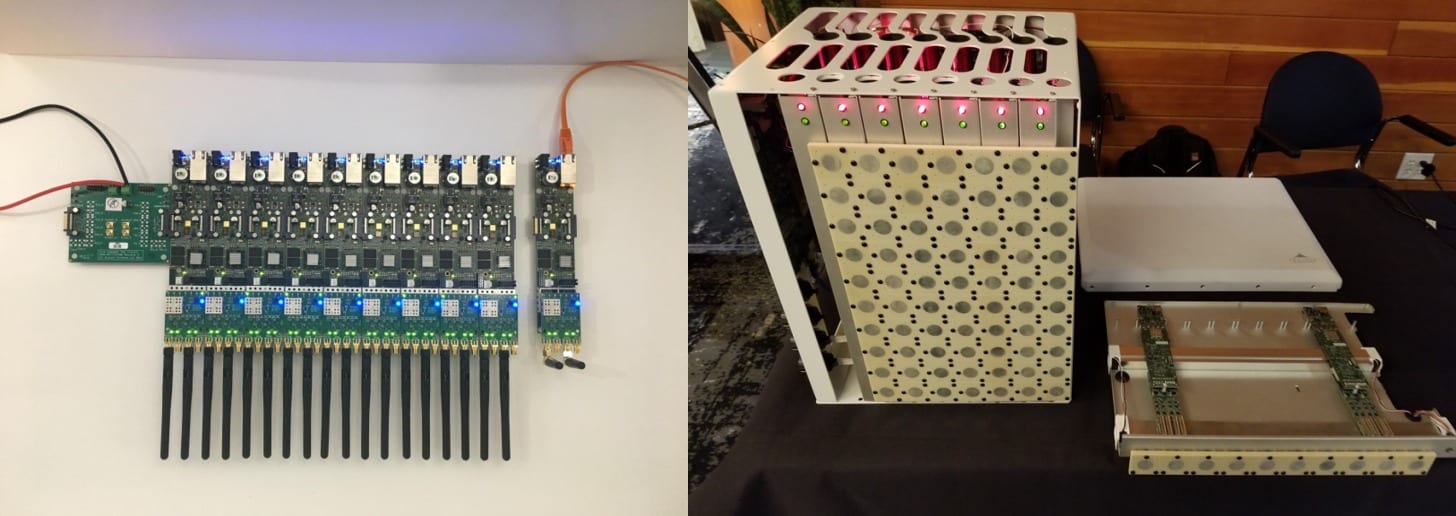Technology

History
Argos was first developed at Rice in 2011 as a 64-antenna base station, becoming the first Massive MIMO base station ever built. Since then, Argos has evolved with two newer versions. The most recent version of Argos (ArgosV3) has been already deployed around Rice campus as part of the ArgosNet project. ArgosV3 will be deployed in and around University of Utah Campus as part of the POWDER platform and will become open to users for experimentation.

ArgosV3
ArgosV3 is a clean-slate design of Argos massive-MIMO base station, providing 1) extreme scalability, 2) maximum reconfigurability, and 3) at-scale deployability. To provide all these features, ArgosV3 leverages the commercial-off-the-shelf Iris SDR modules, designed and manufactured by Skylark Wireless, a start-up spun-off of Rice*. Iris SDR radios are capable of forming daisy-chains in a cable-less fashion, with up to 10 Iris modules operating seamlessly as if they are a single many-antenna device. Iris SDR modules use an interchangeable high-power front-end modules for UHF, BRS and CBRS bands with maximum output power of 28 dBm, enabling long-range at-scale communication. Multiple daisy-chains of Iris modules are interconnected to a central Hub, which provides data aggregation, time and frequency synchronization and power to Iris daisy-chains. All these elements, including up to 80 Iris modules (160 Antennas), are integrated in a weather-proof enclosure, providing an easy-to-deploy plug and play solution. ArgosV3 provides 40Gbps backhaul fiber connection. It is also very power-efficient, consuming maximum 1.5 kW of power.
ArgosNet
ArgosNet consists of three 96-antenna and a single 64-antenna ArgosV3 base stations deployed on Rice campus. There are five carefully planned designated sites allowing movement of these four base stations for various experiments. Each base station support 40Gbps single-mode fiber backhaul (4x 10 Gbps) to ArgosNet cloud in the Mudd building. The cloud currently consists of 6x 36-core super micro servers and an FPGA board which is used for centralized data aggregation as well as multi-cell time and frequency synchronization. These resources are growing over time, with goal of performing much of the baseband processing in the cloud. In the map below, the red pins are outdoor sites, the yellow pin is an indoor site, and the green pin is the data center where ArgosNet cloud compute is located.